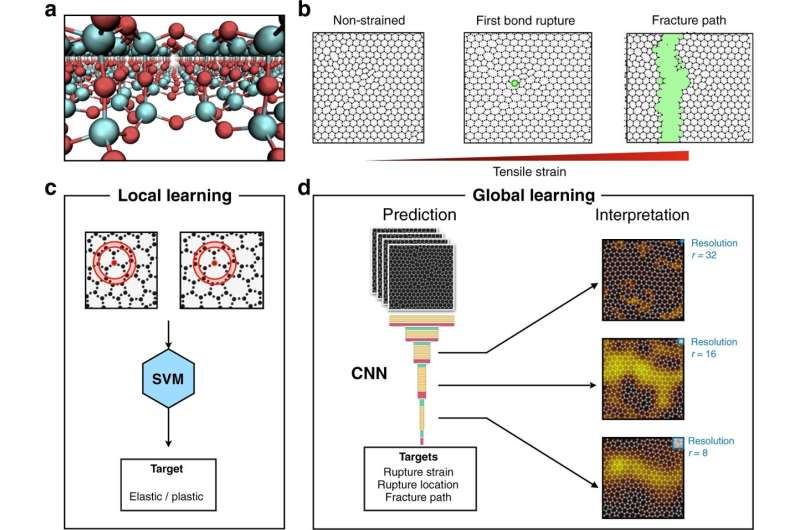Using AI to predict when and where glass will break

The ability to predict when materials will fracture is of immense importance for industrial applications—companies can use this information to maintain devices and components more efficiently and cost effectively. A research team from FAU and the University of Milan has demonstrated that artificial intelligence can predict when quartz glass will fracture based on information learned from images of its atomic microstructure. The researchers have published their results in the journal Nature Communications.
Glass is a non-crystalline solid and in contrast to solid crystalline materials, its atoms are not arranged consistently. This makes it more difficult to predict when glass will break: where there is no defined order, it is difficult to detect the first signs of disorder—an important sign that the crystalline material will soon fracture. Thanks to the latest developments in deep learning with artificial intelligence, researchers can now reliably predict when glass is likely to break.
Scientists are not yet able to explain how the AI system achieves its results and which parameters are being considered and focused on, which is a common problem in artificial intelligence research. "Neural networks are black boxes," explains Prof. Dr. Stefano Zapperi from the University of Milan who was a guest researcher at FAU for one year after receiving the Humboldt Prize. "This is an important limitation in scientific research which is tasked with explaining the causes of a specific phenomenon."
To solve this problem, the researchers are using a method to identify the areas of the microstructure image most often used by the neural networks to predict the fracture.
"Neural networks try to imitate the brain. We also don't always understand how the brain reaches a certain result. But in humans, at least we can observe behavior such as eye movement, which may explain how a certain decision is reached," explains Michael Zaiser, Professor of Material Simulations at FAU and co-author of the study. "We took a similar approach to our problem and investigated points that attracted the attention of the neural network, essentially following what it is looking at."
This method allowed the researchers to investigate local parameters that influence fracturing behavior. "Thanks to this method, we were able to identify and better understand aspects that cause glass to break and not only predict when glass is likely to fracture but also gain fundamental insights into the mechanics of glass materials," says Stefano Zapperi. "The strategy that we have developed can be applied to further applications," adds Michael Zaiser "for example in designing related materials with better fracture resistance."
More information: Francesc Font-Clos et al, Predicting the failure of two-dimensional silica glasses, Nature Communications (2022). DOI: 10.1038/s41467-022-30530-1















